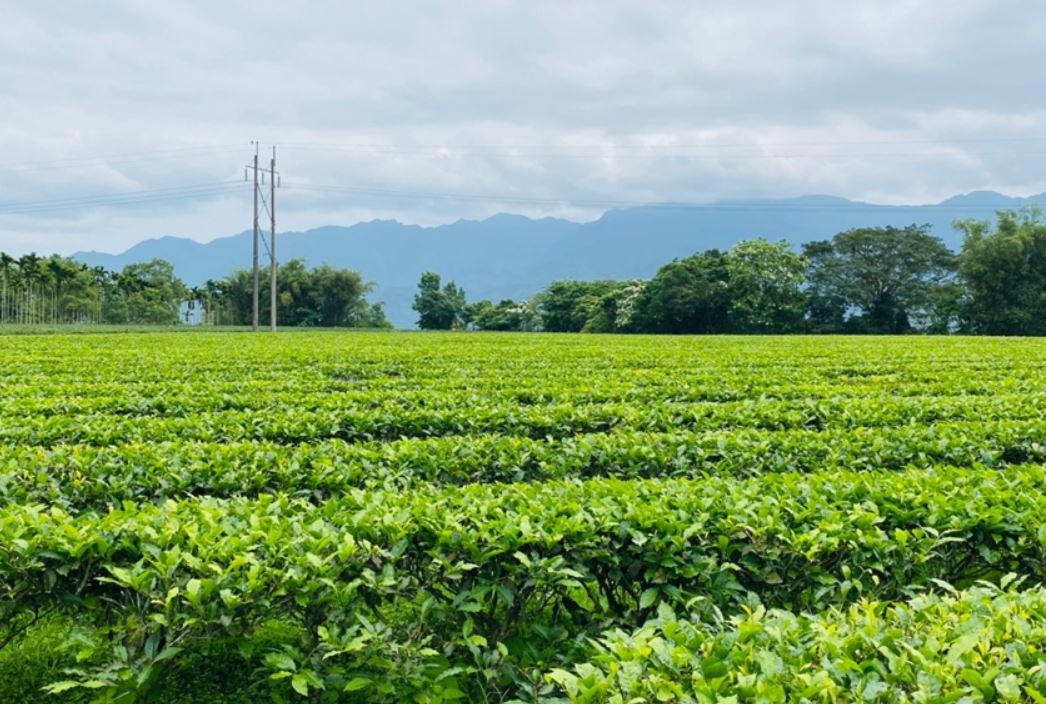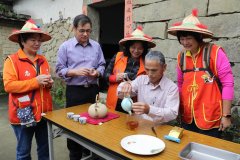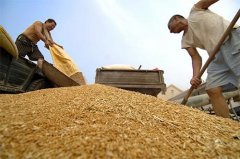How much do you know about tea? Take you to understand the six major tea systems at once.
When it comes to drinks, if "coffee" represents Western culture, then "tea" must be an important culture under the development of oriental society for hundreds of years. Coffee, wine and tea are known as the three major drinks in the world, each with its own characteristics and supporters. Unlike the strong flavor of coffee and wine, tea is even more low-key and magical, but perhaps it is too mysterious. Even if the quality of Taiwan tea is excellent, it cannot be systematically known to the public. As a result, many people can clearly tell the variety, origin and characteristics of coffee, but have little knowledge of the relevant information about Taiwan tea. This article will take you to understand the most basic classification of tea, so that you can experience the diversified taste of Taiwan tea.

When it comes to the types of tea, it is believed that black tea, green tea and oolong tea (green tea) will emerge in the minds of many people, but according to the international standard method of tea classification, they will be divided into six categories: black tea, green tea, oolong tea (green tea), white tea, yellow tea and black tea. Indeed, the first three are the most familiar types, which are also produced in Taiwan, and the latter three are mostly from Chinese mainland, so they are relatively rare in Taiwan. The secret of tea lies in its production process. Many people mistakenly think that black tea and green tea are the types of tea trees. In fact, each piece of tea can be processed according to its production method. Take Darjeeling Tea in India as an example, Darjeeling is a famous black tea, but if you use the method of making green tea, it can also be made into green tea (but it is not delicious). Therefore, each kind of tea has its own suitable production method. And each kind of tea also has its own important techniques, such as the fermentation of black tea, the killing of green tea, the green of green tea, the pile of black tea, the drying of white tea, the dull yellow of yellow tea, the selection of suitable production techniques is the key.
Because of Taiwan's favorable topographical environment and climate, we have a good environment for giving birth to tea. taking a comprehensive view of the types of tea around the world, Britain is dominant when it comes to black tea; green tea is dominated by Japan, which pays attention to the spirit of the tea ceremony; but when it comes to green tea, there is no need to be modest. Taiwan's green tea can be said to be a global leader. This article will take you to understand the six basic categories of tea and where these teas are grown in Taiwan.
Green Tea
Green tea is a kind of unfermented tea without fermentation process, which is the longest known tea with a history of killing cyanine, kneading and drying. It can be traced back to 3000 years ago, and it is also the tea with the least processing and the most natural flavor among the six major teas. Green tea can be divided into stir-fried green tea and steamed green tea according to the green process. Taiwan and Chinese mainland mainly use stir-fried green tea as the main method. Japan is steamed green tea, such as fried tea and the more advanced "jade dew".
The three Gorges is the largest producer of green tea in Taiwan (Picture Source / Sanxia District Peasants' Association-fresh Farmers' Direct Sale)
The output of green tea in Taiwan is relatively small, and the main producing areas are concentrated in Sanxia District, Xinbei City, represented by Biluochun green tea, Longjing tea, and Bachuan green tea. Biluochun is the largest and most common type of green tea in Taiwan, and both the producing area and Longjing tea are the three Gorges tea. both of them are unfermented teas with fresh and natural aromas of original tea, Biluochun tea soup is green, Longjing tea is yellowish green. Bachuan green tea is emerald-grade green tea, Nantou as its producing area, with four chimneys made with jasmine to create a unique flavor.
Black tea
Black tea is a fully fermented tea with a fermentation degree of 80 ~ 90%. It is made by direct withering, kneading and fermentation without killing green. Black tea is currently the most populous tea, also known as the most inclusive tea, because it can show a balanced flavor by adding milk, spices, sugar, etc., and black tea originated in China, but the reason why it can achieve today's global status must be attributed to Britain. With the hegemonic expansion of the "Sunset Empire" Britain in the 19th century, it also brought its love of drinking tea to the colonial countries. So let the aroma of black tea blossom everywhere.
To be distinguished by purity, it can be divided into original tea, mixed tea (Blended tea) and seasoned tea (Flavoured tea). The original tea means a single taste of tea, such as Keemun Black Tea, Assam black tea, etc., while mixed tea is also called blended tea, which refers to the mixture of original tea from many places of origin, such as breakfast tea. Seasoned tea is best known for adding fruit, flowers, spices and other flavors. Earl Grey Tea is made from a mixture of bergamot and tea, so it has a unique citrus flavor.
(photo Source / Yuci Rural Peasants' Association)
In addition to the world-famous oolong tea in Taiwan, the cultivation of black tea is not to be underestimated. Taiwan black tea is mainly produced in Nantou, Hualien, New Pinglin, Taichung and Chiayi. Taiwan Tea No. 18 "Hongyu" is made from Taiwan wild tea and Burmese big leaf tea, with cinnamon and mint aroma; Taiwan tea No. 21 "Hongyun" is selected and bred by Indian big leaf species and Qimen small leaf species, and the tea emits pomelo honey and ripe fruit aromas. Taiwan Tea No. 8 "Assam Black Tea" was improved by Assam, India, with a strong tea flavor and malt flavor, so it is suitable to be used as a flavored tea. "Honey-scented black tea" is another major feature of Taiwan. The main kinds of tea are Qingxin Oolong, Taiwan Tea No. 12 Jinxuan and so on. Because its tea is bitten by the small green leafhopper, it gives it a unique honey flavor and is well received by the market.
Green tea
Green tea, also known as oolong tea, is a kind of tea that Taiwan is proud of. The degree of fermentation is between green tea and black tea, with both the natural glycol of green tea and the strong aroma of black tea, and its production process is also the most complicated. It needs to go through the steps of daylight withering, indoor withering and stirring, and because the production process is long and complicated, different kinds of green tea also have their own characteristics. All the well-known Wenshan bao species, Tieguanyin, Oriental Beauty Tea, Frozen Oolong Tea, Gaoshan Tea and so on all belong to the category of green tea.
Wenshan bao tea mostly uses Qingxin Oolong and Taiwan tea variety 12, and its producing areas are mostly located in Wenshan, Nangang, Shenkeng, Shiding, Pinglin and other areas of Taipei City. Wenshan Bao tea is a kind of light fermented tea, which belongs to fragrance bar package species, the color of tea soup is thorough, and the flavor is sweet and mellow, paying special attention to aroma. Tieguanyin is most famous for its Muzha Zhanghu Mountain and Shimen District of New Taipei City. Tieguanyin is not only a tea tree variety, but also a tea-making technique, so if it is made of Tieguanyin tea tree, it is called "Zhengyi Tieguanyin". Tieguanyin has a strong flavor, with scorched aroma and mellow flavor. Oriental Beauty Tea, also known as Pufeng Tea and Bai Hao Oolong, is a partially fermented tea with heavy fermentation. Its unique honey aroma also comes from the bite (salivation) of the small green leafhopper. The higher the bite degree, the stronger the honey fragrance. The producing area of frozen top oolong tea is concentrated in Lugu, Nantou, and Wenshan bao tea has the title of "planting in the north and freezing in the south". It is a moderately partially fermented tea with a fermentation degree of 50% and 60%. The special technique of "cloth kneading tea" makes the tea hemispherical, smooth in taste, sweet and mellow, and is a well-known tea species in Taiwan. And Gaoshan tea is relative to flat and hilly tea, generally refers to tea produced by tea gardens above 1000 meters above sea level, with a wide range, including Chiayi, Nantou, Hualien, Taichung and other places. The main well-known tea areas are "Alishan", "Shanlin Creek", "Lishan" and "Dayuling". In the unique geographical environment, tea has a unique alpine charm, smooth and full taste, but in order to retain this flavor. Most Gaoshan tea uses light or no fire, so that the most natural fragrance of tea can make people aftertaste again and again.
Top left: Oriental Beauty Tea / Top right: Wenshan Bao growing Tea / bottom left: Tieguanyin / bottom right: Dayuling Tea (Photo Source / Liao Changxing tea house)
Black tea
Black tea is a kind of post-fermented tea with a fermentation degree of 100%. It may be strange to hear black tea, but it is famous if you say "Pu'er tea" (of course, Pu'er tea is only one of the black teas and cannot fully represent black tea). After processing, it takes a long time to accumulate and ferment, which makes the tea brown, and because of its long fermentation time, it also increases the value of Pu'er tea. In addition to Pu'er tea, the well-known black tea includes Nanhei tea, Hubei Laoqing tea, Guangxi Liubao tea, Sichuan west roadside tea and southern roadside tea.
Hunan Black Tea (Picture Source / Changxing Tea Company)
White tea
White tea does not kill cyanine or knead in the process, focusing on the two major processes of "withering" and "drying". In the indoor withering process, the temperature and humidity are controlled, and the aroma can be dried, thus retaining the original appearance of tea cyanine, which is different from the strip shape of black tea or the ball shape of green tea. There is also a common saying about white tea, "one year of tea, three years of medicine, seven years of treasure," which means that the medicinal value of white tea will increase with time. In the past, there was a custom of storing white tea for medical treatment. The origin of white tea is mostly concentrated in Fujian, China, and the output is small. The more famous ones are Baihao silver needle, white peony, Gongmei, Shoumei, and new craft white tea.
Yellow tea
Yellow tea is a kind of light fermented tea, the process is close to green tea, but there is a more stuffy pile of yellow technique, which is covered with cloth or paper and slightly heated after killing, so that it can be oxidized by non-enzymatic oxidation. the tea will show yellow after it is stuffy, and the tea soup is also golden. This has also become the characteristic of yellow tea "yellow leaf yellow soup". People are better known for Junshan Silver Needle Tea, Mengding yellow bud, Huoshan yellow bud and so on.
- Prev

Xingping pushed to the old tea master in the deep pit and deep mountain to guide the interest of making tea.
Traditionally, most of the tea is female, while the tea maker is mainly male. In order to break the gender industry stereotype, the Social Bureau of the New Taipei City Government and the Shenkeng District Public Office jointly held "Tea fun made by daughters of Tea Mountain" at the Baozihu Farmers' Market. Men can go to mountain tea and women.
- Next

Credit Suisse: more than 30% of global food output is consumed and wasted
Credit Suisse Research Institute released a report entitled "Global Food system: exploring Sustainable Development Solutions," pointing out that more than 30% of the world's total food production is consumed and wasted. If the sustainability of the global food system is to be enhanced, then it is necessary to turn to a plant-based diet.
Related
- A one-day flower show brings 130 million yuan in orders! Nanhai, this Phalaenopsis exhibition is amazing
- What do the flower language and meaning of Lutheran tree mean? Precautions for planting Lutheran tree
- Encounter Chaoshan Kongfu tea, not without this cup of Phoenix single clump
- The durian market in Vietnam and Thailand is flooded. The price of imported durian has plummeted by 30-40% in a month.
- Shanghai solved the problem of local vegetable supply by planting 80,000 mu of green leafy vegetables.
- Wageningen University has become the best agricultural university in the world for the seventh time in a row.
- The strongest export season of South African grapes is full of challenges, with exports to Russia falling sharply by 21%.
- Sri Lanka is on the verge of bankruptcy, "Tea for debt" Organic Agriculture Revolution aggravates the Food crisis?
- Turning waste into earthworm manure and worm manure into organic fertilizer-A new choice for auxiliary farming
- Organic rice growers shoulder the responsibility of nurturing agricultural talents! Yinchuan Sustainable Farm with Organic Life Camp

